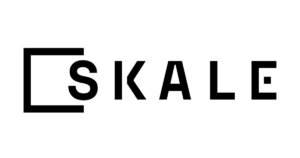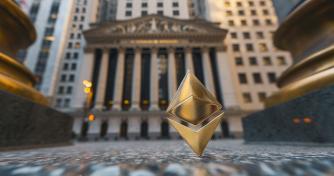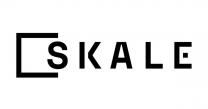 Investors are now buying Ethereum (ETH) at a 750% premium; a smart investment or Robinhood-esque FOMO?
Investors are now buying Ethereum (ETH) at a 750% premium; a smart investment or Robinhood-esque FOMO? Investors are now buying Ethereum (ETH) at a 750% premium; a smart investment or Robinhood-esque FOMO?

Photo by José Martín Ramírez C on Unsplash
Ethereum demand is surging, if Grayscale’s data is considered.
Despite an ongoing dip in prices as of June 12, demand for an institutionally-aimed ETH product has increased multifold, with investors paying a huge premium to an institutional cryptocurrency firm for Ether exposure.
However, the surge does not necessarily mean Ethereum is facing groundbreaking institutional demand, one analyst notes.
Companies rushing in?
Ether sold by the Grayscale Investment Trust is now pegged at a massive 750 percent premium, as per a tweet by crypto research firm Messari:
Grayscale Ethereum Trust (ETHE) investors are currently paying a 750% premium for $ETH exposure
? Secondary market investors are buying ETHE's underlying ETH at an implied price of $2,095
? 46% above ETH's all-time high
Full analysis: https://t.co/UCcATpS0uT pic.twitter.com/SAiYQf3w9M
— Messari (@MessariCrypto) June 11, 2020
Secondary market investors are buying ETHE, the Grayscale product that represents a certain amount of underlying ETH, at an “implied” price of $2,095. The figure is over 45 percent higher than ETH’s all-time high of $1490 in January 2018.
Looking at the metrics, the premium shows investors are seeking massive Ethereum exposure. Possible fundamental catalysts include the upcoming shift to ETH 2.0 — the protocol’s move to a staking consensus algorithm that could, theoretical, act as a passive investment for some.
But Messari’s Ryan Watkins believes the premiums are being inflated due to simple economic factors, and less Ethereum fundamentals.
Watkins said ETHE shares are available to only “accredited” investors — individuals and businesses with a certain, usually high, net worth and income who gain access to securities and assets that the retail public doesn’t.
In the United States, such investors come under the “Rule 144 exemption,” which, as Watkins notes, creates a limiting factor:
Initial ETHE shares are only available to accredited investors and can be created either using cash or cryptocurrency ("in-kind").
A “Rule 144 exemption” allows these initial investors to sell shares to the public on secondary markets after a 12-month holding period.
— Ryan Watkins (@RyanWatkins_) June 11, 2020
With a lot of buyers and few sellers, secondary market investors can, technically, “push” ETHE prices over the value of the underlying cryptocurrency, or ETH in this case. This creates a price dislocation, with ETHE being a misrepresentation of actual Ether prices.
Watkins noted:
“Since no new shares are being created, no new cryptocurrency is actually going into the trust, creating a premium to the underlying.”
He added the above creates a “significant arbitrage opportunity” for accredited investors, allowing them to create “new shares in the primary market”
A possible plunge
The above very loosely represents a similar scenario to the 2008 financial crisis. Bankers and traders, at the time, purchased highly-leveraged options and collateralized debt obligations (CDOs) that were completely out-of-sync with the underlying assets. This created trading opportunities for a very short period but eventually brought a nation-wide financial bust.
In the case of ETHE, Watkins tweeted:
The premiums not only cause secondary market investors to buy ETH exposure at absurd prices, but also exposes them to excess volatility given the fluctuating premiums. pic.twitter.com/Iu1H8FIYNE
— Ryan Watkins (@RyanWatkins_) June 11, 2020
Watkins believes the high premiums create arbitrage opportunities for sophisticated investors, courtesy of their ability to create new shares in the primary market.
But the dislocation may not last always. Computerized arbitrage trading, heavily seen in the U.S. ETF markets, quickly closes out any price dislocations when enough participants jump onboard. Simply put, traders start aggressively buying the underlying asset and instantaneously sell the broader index for “risk-free” profits.
The above is an illustrative example, and exact mechanics for how arbitrageurs can take advantage of the high-premium environment are available on a relevant Messari blog post.






























































